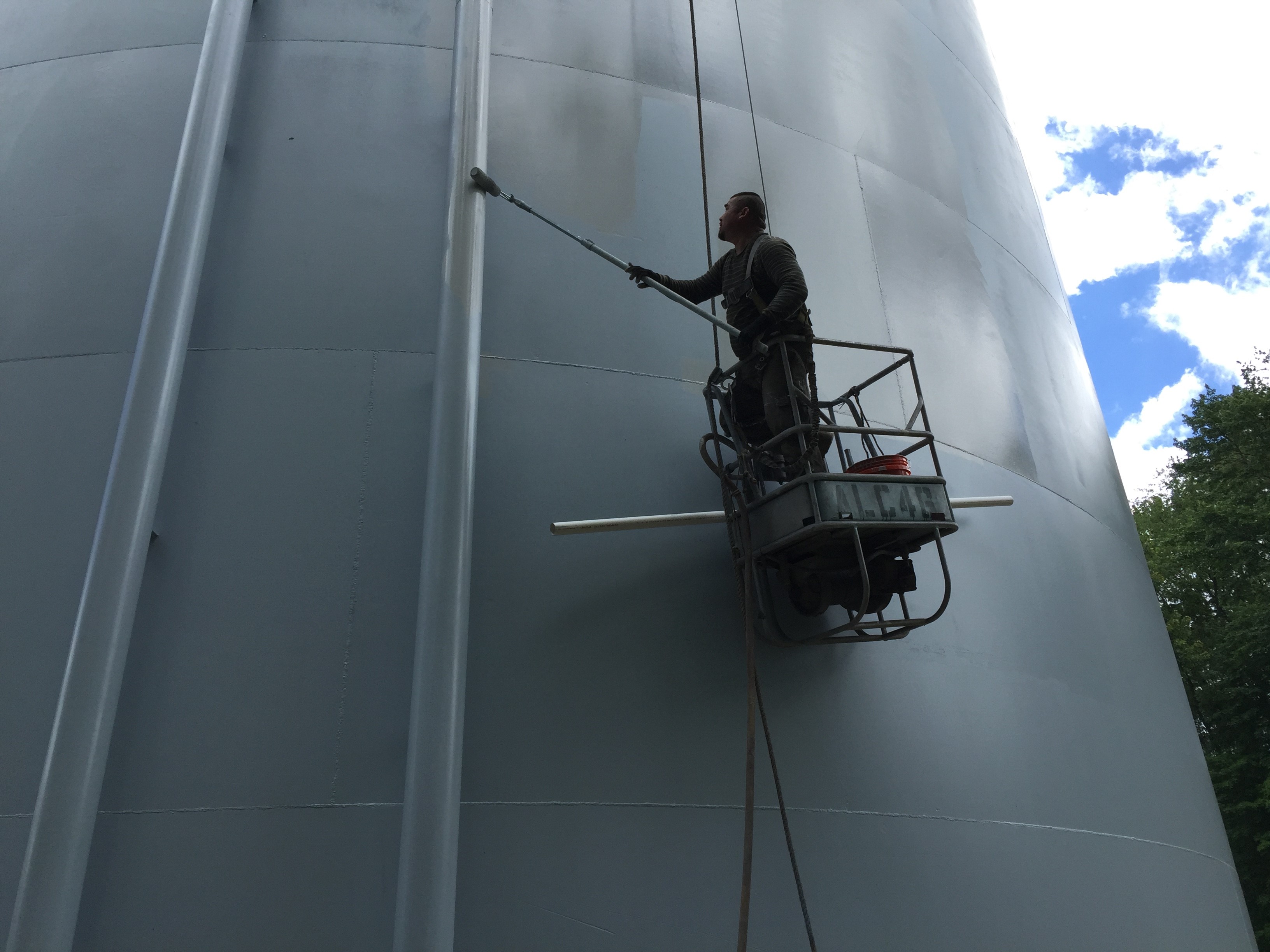By: Tom Wunderlin, Induron Sales Representative
 Climate and weather play an important role when it comes to the application of coatings. When to apply and when not to apply is an important decision. There are many important guidelines to follow that appear on almost all product data sheets. For instance, many data sheets advise users to NOT apply when the relative humidity (RH) is above 85% or when the dew point is less than 5 degrees Fahrenheit to the ambient air temperature and substrate temperature.
Climate and weather play an important role when it comes to the application of coatings. When to apply and when not to apply is an important decision. There are many important guidelines to follow that appear on almost all product data sheets. For instance, many data sheets advise users to NOT apply when the relative humidity (RH) is above 85% or when the dew point is less than 5 degrees Fahrenheit to the ambient air temperature and substrate temperature.
Do we all understand exactly what this all means? And if we do, how do we actually measure these and measure them frequently throughout the project to ensure a problem-free project?
Here are a few guidelines for monitoring and complying with environmental conditions during the application of coatings:
- The surface temperature being coated should be 5 degrees Fahrenheit above the dew point. Generally, coat steel when temperatures are rising to avoid getting caught by dew point. However, in some circumstances it is best to coat concrete when temperatures are declining to avoid moisture issues. Check ambient and substrate temperatures frequently to ensure suitable application conditions exist for each product!
- Do NOT apply coatings when RH is above 85%. Preferably apply coatings, especially two pack polyurethanes (PU), when RH levels are at or below 70%. Isocyanate curing agents in PU react with moisture, so if RH levels are higher than 70%, an improper cure may result. In the worst-case scenario, discoloration and premature loss of gloss may occur.
- Keep within the temperature guidelines for application as stated on product data sheets. Remember, that the best and easiest application temperatures are generally those in the middle of the recommended ranges. Most premature paint failures are due to incorrect product specification, improper surface preparation or ignoring the environmental conditions during application of a paint system.
- Surface prep and coating application must be done under the proper conditions. Ambient temperature must be maintained during the application and curing periods. Substrate temperatures, particularly concrete and steel, can lag behind ambient temperatures but should always be measured prior to application of a coating. Always refer to the coating manufacturer’s data sheet for the recommended range of temperature for the air, substrate and coating material!
- Interior conditions matter, too. These guidelines apply to interior paint application, as well. Plus, proper ventilation and airflow is important to ensure proper drying of the paint and to reduce the build-up of fumes. Applicators and inspectors should monitor and record ambient and surface temperatures as well as humidity before, during and throughout the curing period.
- Document the activities of all coating or lining applications. Experience confirms that documenting the activities of a coating or lining application can be the key to a successful job. The purpose of documentation serves as a reminder of all the steps needed to meet the requirements of the specification and the material to be applied. Plus, documentation simplifies troubleshooting after the installation. Daily environmental conditions that should be documented (written) include:
- Air Temperature
- Humidity
- Dew Point Temperature
- Surface Temperature
- Material Temperature prior to mixing
- Substrate moisture testing
- Note wind conditions, if substrate is in direct sunlight
When application is not completed under proper conditions, it affects the cure, performance and service life of the coatings system. Temperature and humidity before, during and after application can affect the adhesion, penetration, durability and appearance of the applied coating. For instance, low surface temperatures can cause incurability or freezing, while high surface temperatures can cause a reduction in penetration and adhesion of the coating. All in all, measuring and controlling climate and environmental parameters is vital to a successful coating system application.




